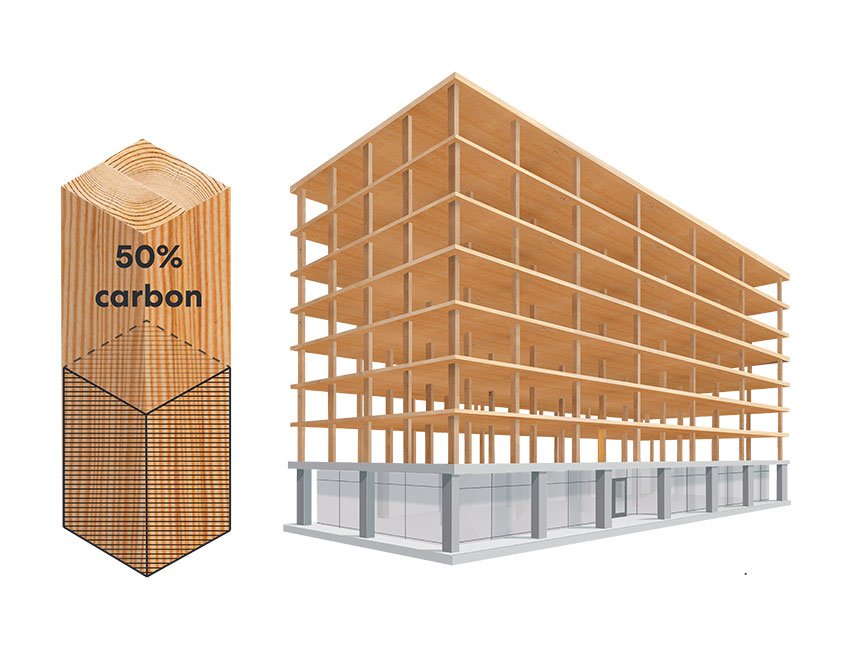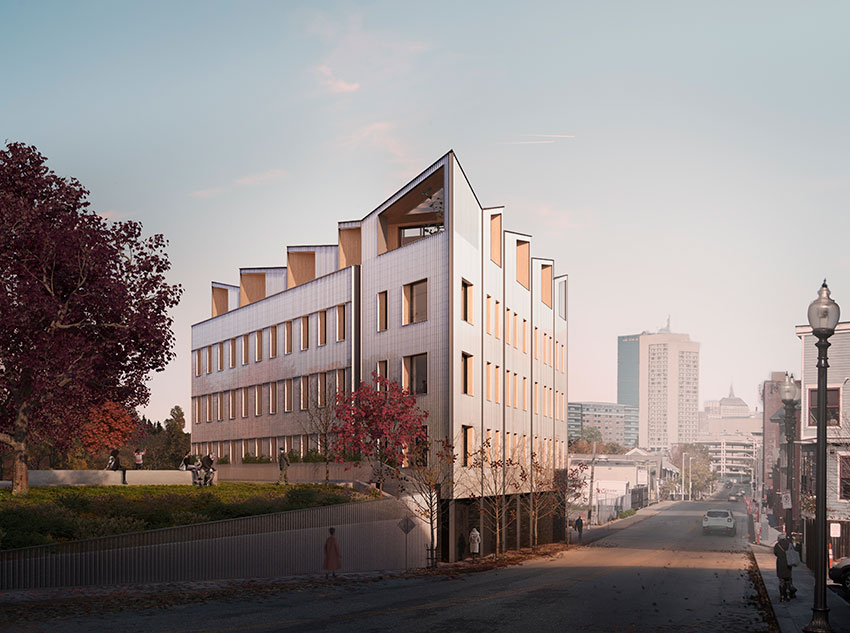Multi-Family, Mid-Rise Wood Buildings
 1 AIA LU/HSW; 1 GBCI CE Hour; 0.1 ICC CEU; 0.1 IACET CEU*; 1 AIBD P-CE; AAA 1 Structured Learning Hour; This course can be self-reported to the AANB, as per their CE Guidelines; AAPEI 1 Structured Learning Hour; This course can be self-reported to the AIBC, as per their CE Guidelines.; MAA 1 Structured Learning Hour; This course can be self-reported to the NLAA.; This course can be self-reported to the NSAA; NWTAA 1 Structured Learning Hour; OAA 1 Learning Hour; SAA 1 Hour of Core Learning
1 AIA LU/HSW; 1 GBCI CE Hour; 0.1 ICC CEU; 0.1 IACET CEU*; 1 AIBD P-CE; AAA 1 Structured Learning Hour; This course can be self-reported to the AANB, as per their CE Guidelines; AAPEI 1 Structured Learning Hour; This course can be self-reported to the AIBC, as per their CE Guidelines.; MAA 1 Structured Learning Hour; This course can be self-reported to the NLAA.; This course can be self-reported to the NSAA; NWTAA 1 Structured Learning Hour; OAA 1 Learning Hour; SAA 1 Hour of Core Learning
Learning Objectives:
- Identify the sustainability and economic benefits of using wood construction for mid-rise multi-family or mixed-use buildings.
- Summarize building code requirements and provisions for mid-rise multi-family wood-frame structures.
- Discuss wood framing solutions that address issues such as shrinkage, fire protection and seismic requirements while minimizing the carbon footprint of the building.
- Explore innovations in wood framing design techniques and wood product technologies that enhance energy efficiency.
This course is part of the Wood Structures Academy
Fire Protection Requirements
Regardless of material used, all buildings, including multifamily structures, must be designed to protect the health, safety, and welfare of occupants and first responders. When proper fire protection systems are designed into a wood-framed structure, the dangers associated with fire are mitigated. The code recognizes that there are different ways to accomplish this and requires that design professionals demonstrate that required levels of fire protection are provided. The minimum fire-resistance rating requirements for building elements (i.e. structure, walls, floor, roof, etc.), based on construction type are provided in IBC Table 601. Specific details of fire- and smoke-protection features are detailed in Chapter 7. The building code’s intent is that the combination of fire resistance and active protective systems provides containment of a fire within a defined space (such as an apartment) so that building occupants have time to evacuate before the fire can move to other parts of the building.

Based on these requirements, wood-frame building elements, just like other materials that require fire-resistance ratings, typically show compliance per independent test procedures. Two common testing standards are ASTM E119, Standard Test Methods for Fire Tests of Building Construction Materials, and UL 263, Fire Tests of Building Construction and Materials. The code also provides alternative methods for determining fire resistance per IBC Section 703.3, which includes prescriptive fire resistance as shown in tables in Section 721 and other approved sources, calculated fire resistance as provided in Section 722, and engineering analyses based on comparisons of tested assemblies or building elements.
Maximizing Building Size Limits
Designers need not avoid wood construction due to the tabular height or area limits provided in the code. There are at least two ways the code allows a design to exceed the area and height limits for construction types.
- Fire Walls – IBC Section 706 specifically addresses fire walls and permits portions of a building separated by one or more of them to be considered as separate, side-by-side buildings for purposes of allowable size and height. In this way, wood-frame buildings can be designed as separate but connected buildings for code-compliance purposes.
- Podium Design – For mid-rise wood-frame buildings, architects and engineers are increasingly turning to podium or pedestal design instead of building directly on a concrete slab on grade. This can provide for additional floor levels for the building compared to what is typically permitted. Section 510 of the IBC addresses Special Provisions and allows five stories of Type III-A wood-frame structures over one or more levels of Type I-A construction. These typically 5-over-1 and 5-over-2 buildings are treated in the code as two structures when they are separated by a 3-hour fire-resistance-rated horizontal assembly. The podium is considered as a separate and distinct building for the purpose of determining height and area limitations and vertical continuity of fire walls. The overall height of the two buildings together is measured from grade plane, and the height-above-grade limitations of Chapter 5 for the upper building apply.
Fire-Resistance-Rated Assemblies
1- and 2-hour fire-resistance requirements for light-frame construction are generally met by using assemblies of products and materials, often including gypsum sheathing over wood, which have been tested in accordance with ASTM E119 or UL 263, although there are other methods based on testing that can be used as indicated in Section 703.3. Lists of wood floor and wall assemblies with accepted ratings are available from the American Wood Council (DCA 3: Fire-Resistance-Rated Wood-Frame Wall and Floor/Ceiling Assemblies, www.awc.org ). Other sources include Underwriters Laboratories (UL)’ fire-resistance-rated systems and products, the UL Fire Resistance Directory, and the Gypsum Association’s Fire Resistance Design Manual.
Fire Resistance of Heavy Timber
Part of the reason heavy timber has effective fire resistance is that it takes a long time to burn through large wood members. That means that heavy timbers have an advantage in a fire because they char on the outside while retaining their strength and load-carrying capacity, slowing combustion and allowing time for occupants to evacuate the building and improving safety for first responders. Heavy timber sizing is addressed in the code to allow for structural safety under fire conditions to be built in. When heavy timber is required to be fire-resistance-rated and the calculation methods of Section 722 of the IBC and Chapter 16 of the AWC National Design Specification (NDS) for Wood Construction are used, a defined percentage of the wood member is provided as sacrificial protection (considered to burn or char in a fire). Wood fiber beneath the char layer retains much of its strength during the fire, so by oversizing the member, structural integrity remains despite the loss of cross-sectional area.
This has direct application to multifamily construction. According to IBC Table 601, Fire-Resistance Ratings Requirements for Building Elements, heavy timber is permitted in roof construction as an alternative to 1-hour (or less) fire-resistance-rated construction for all occupancies, and in all construction types except Type IA.
Mass timber is well suited for fire resistance in multifamily construction. This was reflected in a case study showing the general liability insurance risks of a mass timber building to be no different than that of a concrete or steel building.
Fire Retardant-Treated Wood (FRT)
IBC Section 2303.2 defines requirements for FRT wood. Building designers must be aware that design values should be adjusted when FRT wood and sheathing is used. Strength adjustments are provided by the treaters based on proprietary chemical formulations. Sections 602.3 and 602.4.1 of the 2021 IBC clarify that both wood framing and sheathing are permitted in exterior walls of Type III and IV buildings where FRT wood is used. CLT is also permitted within exterior wall assemblies of Type IV construction not less than 6 inches thick with a 2-hour rating or less when the exterior surface of the wood panel is protected by FRT wood sheathing, gypsum board, or a noncombustible material. There are also applications for FRT wood in Types I and II construction, such as nonbearing partitions and exterior walls, roof construction, and balconies, subject to the limitations in Section 603.1.
Designing Building Elements for Different Adjacent Fire Ratings
One design consideration for some construction types is that floors and walls may have different fire rating requirements. For example, in Type III-A construction, load-bearing exterior walls are required to have a 2-hour rating, but a floor may only require a 1-hour rating. If it is necessary to address the continuity of fire resistance for the wall at the intersection of the floor, detailing to achieve this smoothly and effectively is important to a good design. The American Wood Council has developed fire resistance details for these intersections in their Design for Code Acceptance (DCA) 3 Fire-Resistance-Rated Wood-Frame Wall and Floor/Ceiling Assemblies, available at https://awc.org/codes-standards/publications/dca3. Designers should work with their local building official to determine acceptable solutions to fire-resistance detailing at the floor-to-wall intersection.












